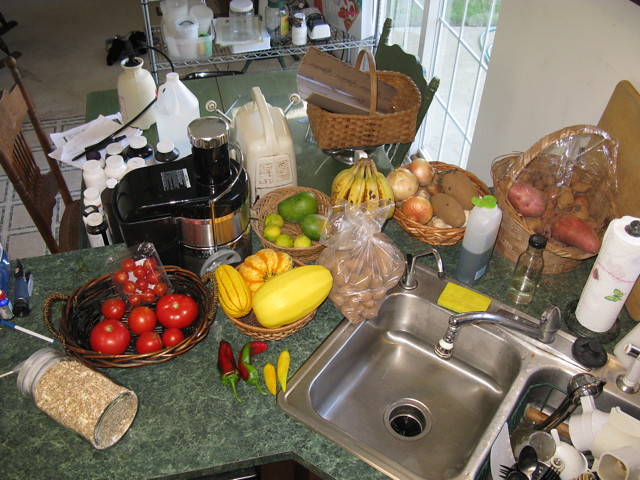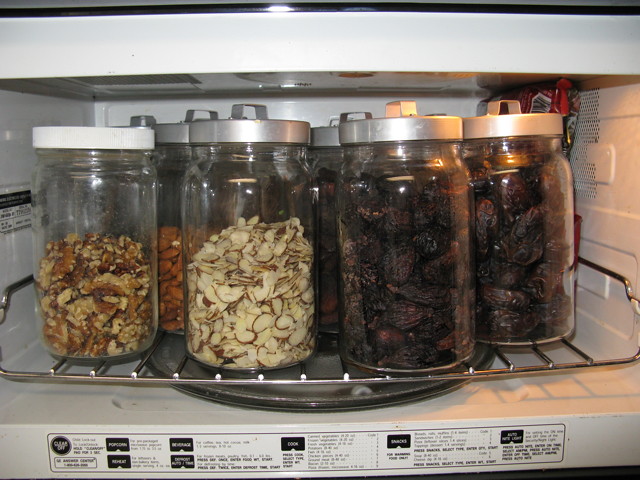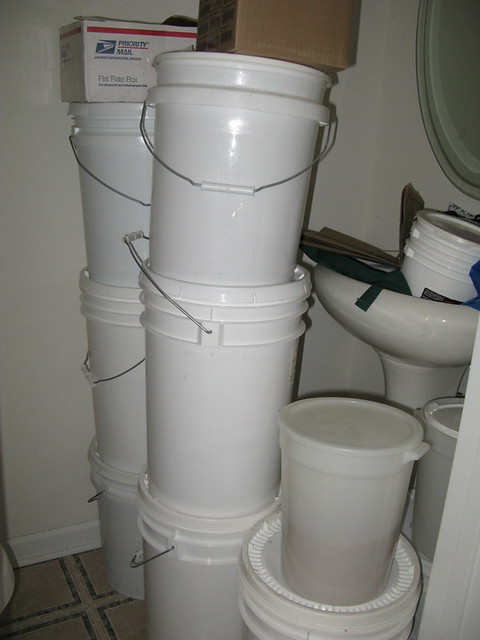What struck me was the "wholeness" of all these foods -- picked or purchased in their natural states, waiting to be eaten. My only regret is that I didn't grow all of them -- even lemons and mangos could be grown in an indoor greenhouse.
Yes, there are some processed foods in the house, but mostly not. There are dried fruits, nuts, pastas, and noodles stored in the microwave . . .
and more jars of bulk beans, grains, rice, lentils, oatmeal, and flours stored in the pantry . . .
and buckets of wheatberries, brown rice, black rice, chia seed, flax seed, maca powder, and dried beans stored in the guest bathroom:
Please don't misunderstand the motivation behind these pictures ("Hey -- look at all my food!"). It's just to reinforce the idea that plant foods are grown whole, are available whole, and can be (should be) eaten as whole as possible. It reinforces the oft-quoted idea that once you leave the produce and dried/bulk sections of the grocery store, you leave the "life" zone and move into the "dead" zone where things have been processed for one purpose: to sit on grocery store shelves for extended periods of time.










No comments:
Post a Comment